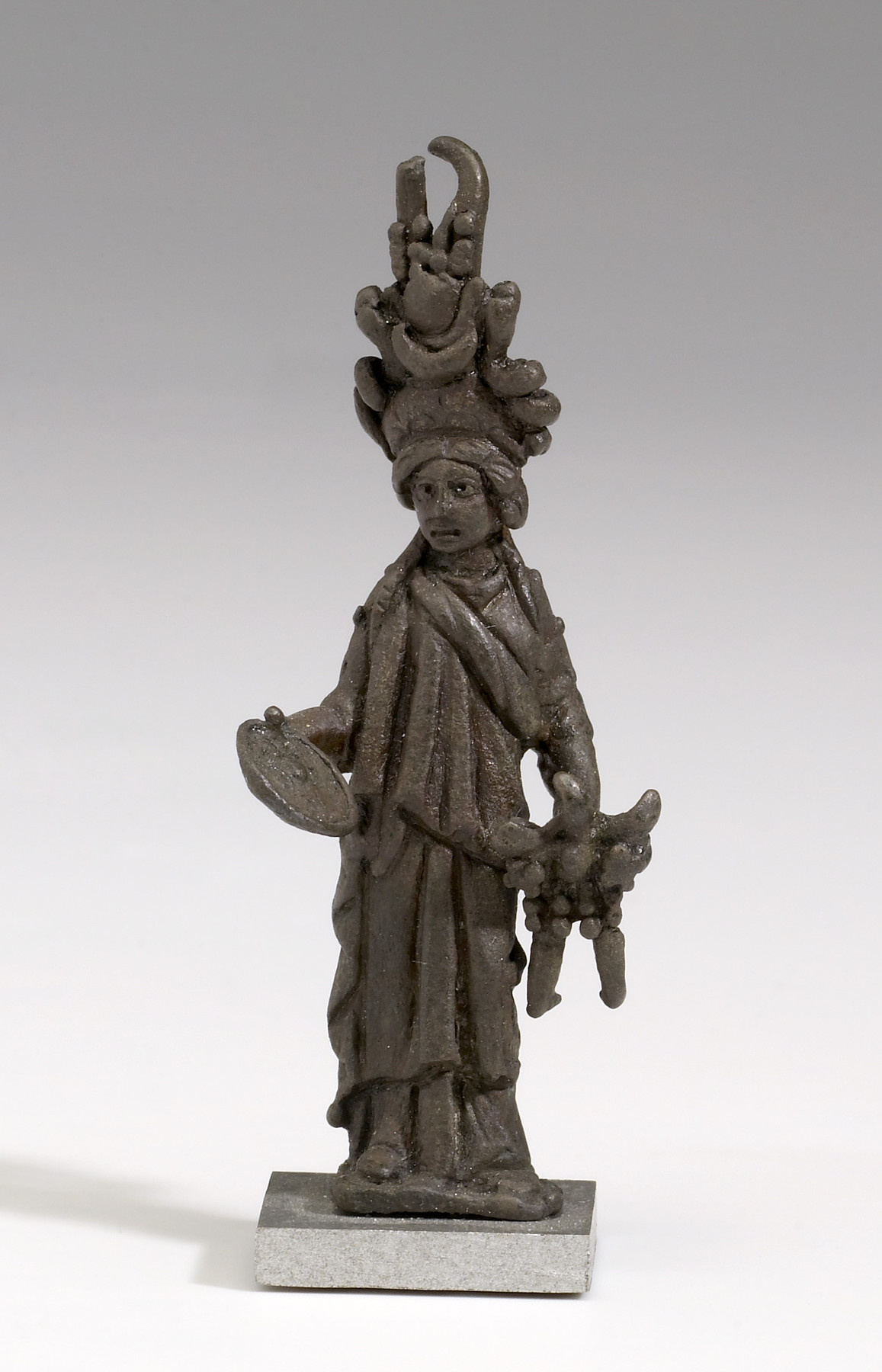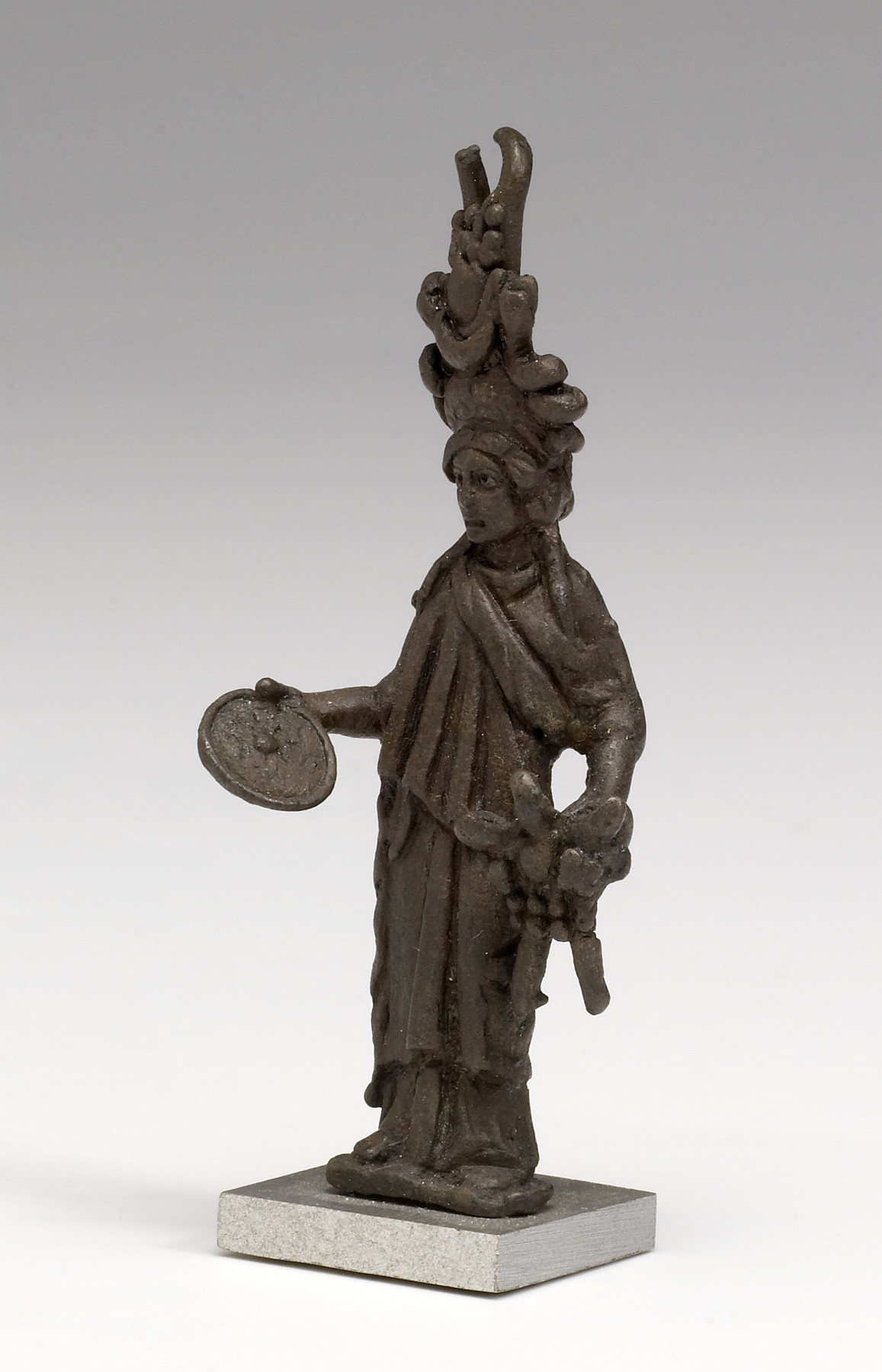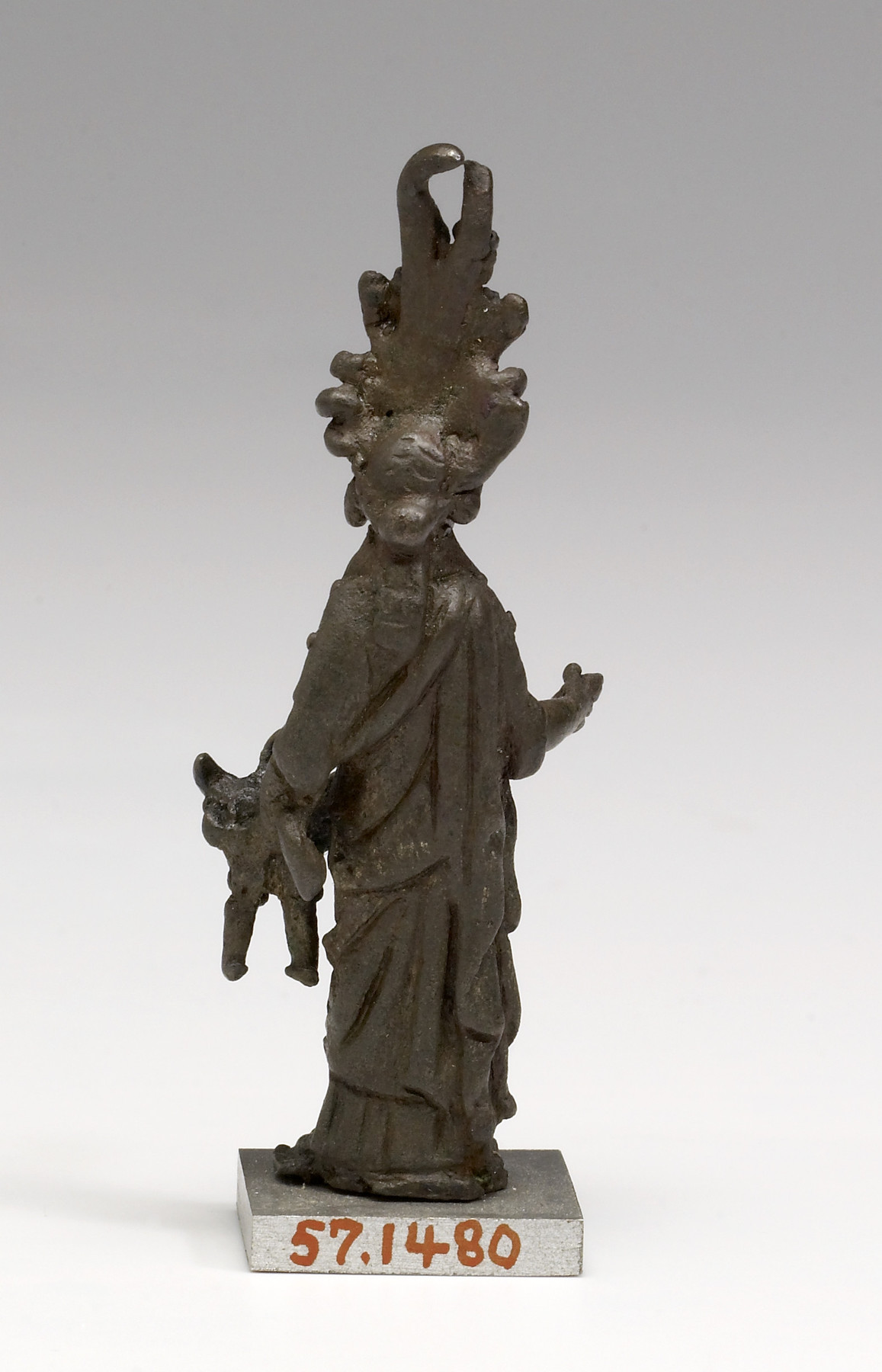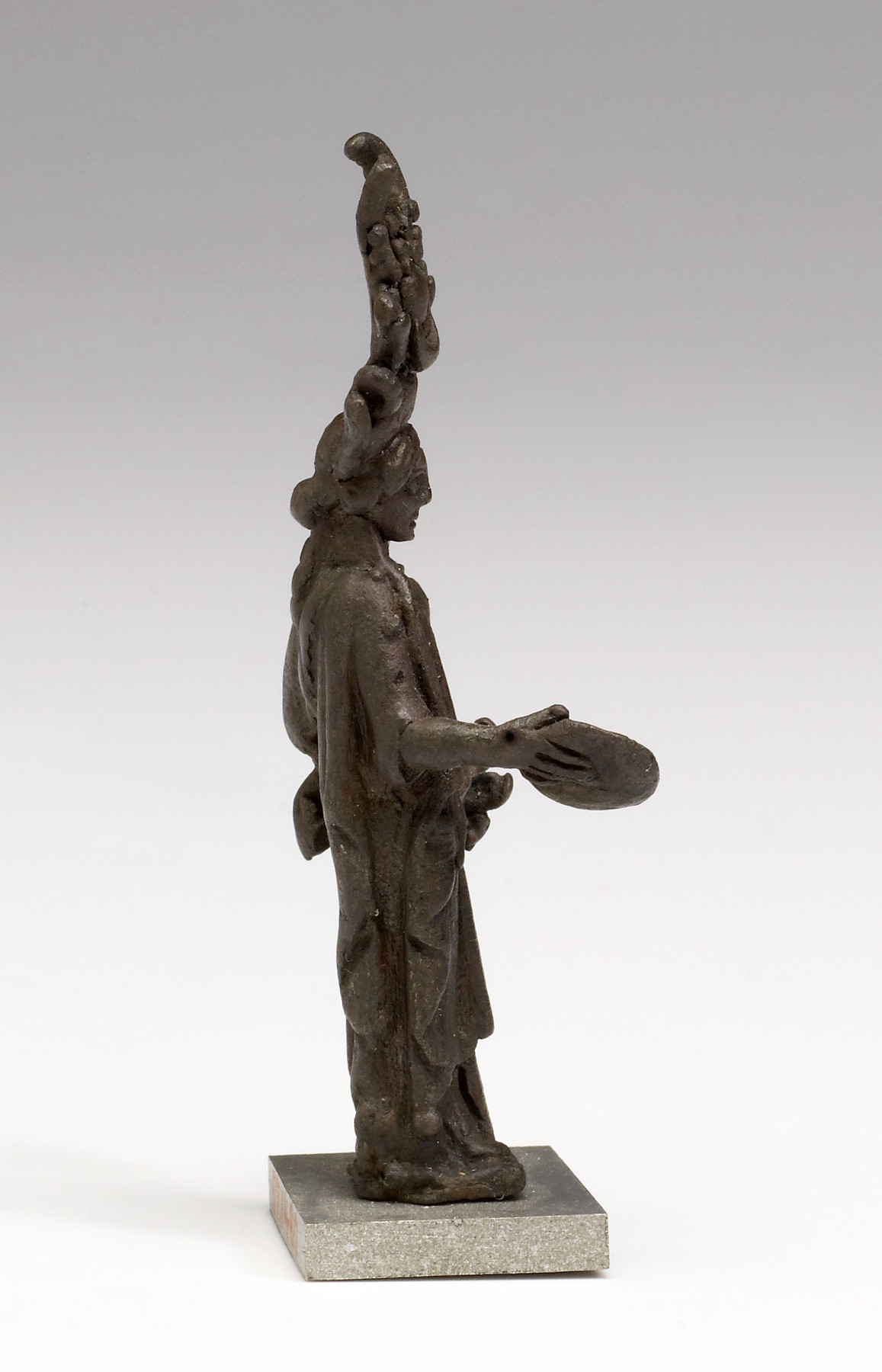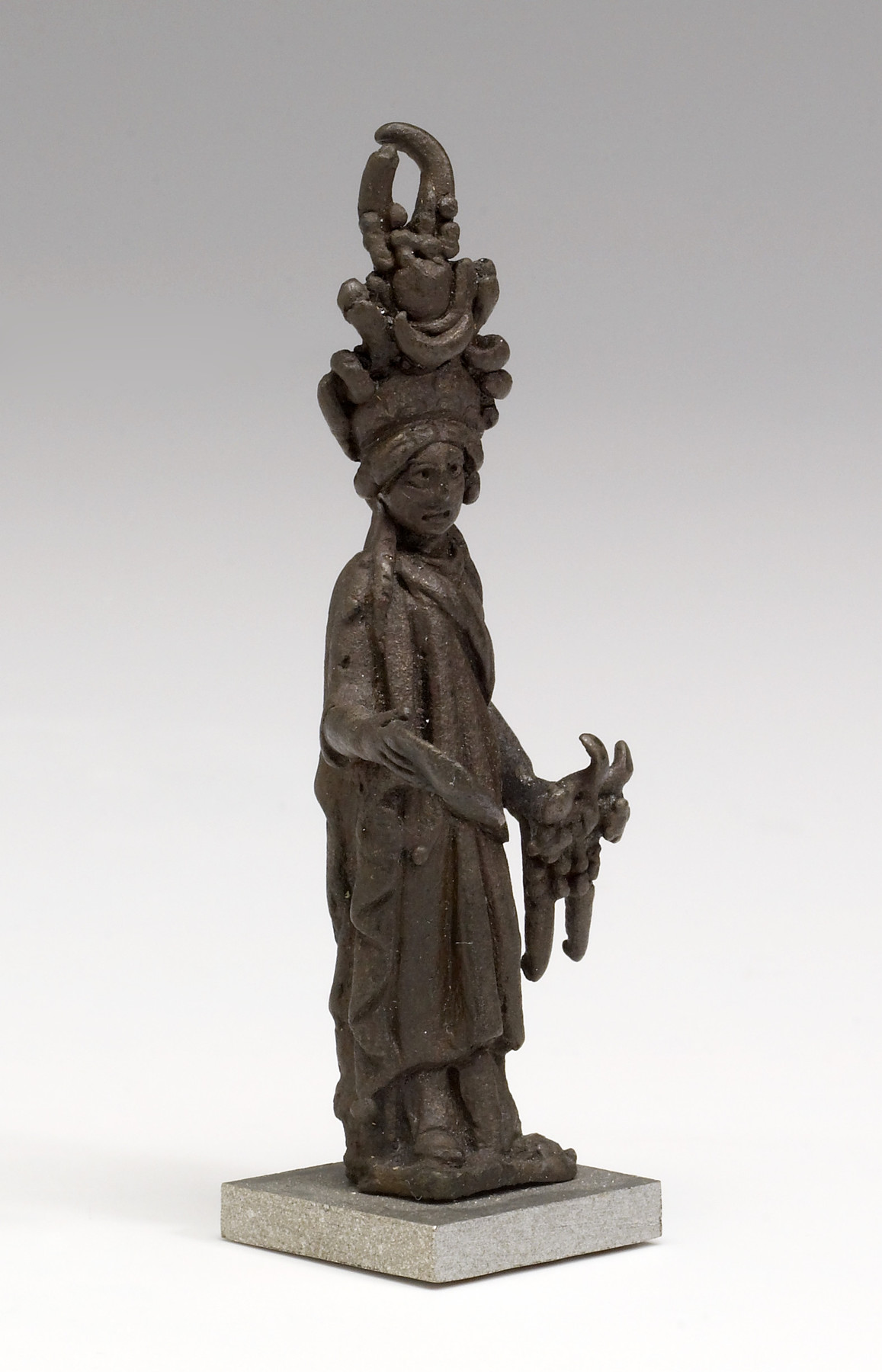Isis-Tyche-Fortuna
(Roman Empire )
Many religions were syncretistic, meaning that as they grew and came into contact with other religions, they adopted new beliefs and modified their practices to reflect their changing environment. Both Greek and Roman religious beliefs were deeply influenced by the so-called mystery religions of the East, including the Egyptian cult of Isis, which revealed beliefs and practices to the initiated that remained unexplained, or mysterious, to the uninitiated. Most popular Roman cults had associations with these mystery religions and included the prospect of an afterlife.
Images of the goddess Tyche, the personification of a city, were commonly combined with elements of Fortuna, the goddess of abundance, holding the horn of plenty. In this example, the elaborate crown of Isis, the Egyptian mother-goddess who also represented fertility and abundance, was added. Such figurines were made for household lararia, or shrines.
Provenance
Provenance (from the French provenir, 'to come from/forth') is the chronology of the ownership, custody, or location of a historical object. Learn more about provenance at the Walters.
Henry Walters, Baltimore [date and mode of acquisition unknown]; Walters Art Museum, 1931, by bequest.
Conservation
| Date | Description | Narrative |
|---|---|---|
| Examination | Examined | |
| Examination | Examined in preparation for case retro-fit and re-installation. |
Geographies
Italy, Rome (Place of Origin)
Measurements
15/16 x 11/16 x 2 1/2 in. (2.4 x 1.8 x 6.4 cm);
mount: 1/8 x 3/4 x 11/16 in. (0.3 x 1.9 x 1.7 cm)
Credit Line
Acquired by Henry Walters
Location in Museum
Accession Number
In libraries, galleries, museums, and archives, an accession number is a unique identifier assigned to each object in the collection.
In libraries, galleries, museums, and archives, an accession number is a unique identifier assigned to each object in the collection.
57.1480

